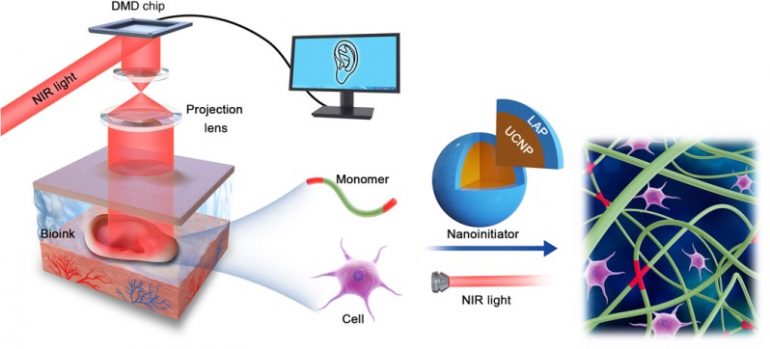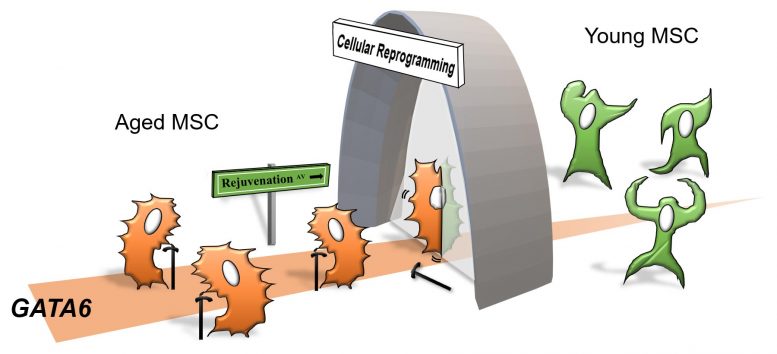
This month I became one of the first doctors to complete a certificate course in the emerging specialty of Longevity Medicine. As I have been hinting at in several posts over the past year, there is an abundance of fascinating science developing around the topic of anti-aging, and Longevity Medicine is how anti-aging will be put into clinical practice. A lot remains to be proven, but it is a subject that we can be optimistic about in otherwise challenging times. Here is a very brief summary of my top ten developments in anti-aging and longevity this year, in no particular order:
- Biological age clocks. Using sophisticated artificial intelligence analysis of genetic changes and other “biomarkers,” it is possible to determine your biological age, and the specific age of different tissues such as skin. Why is this important? One reason is that it provides a way to objectively measure the results of anti-aging treatments. The other is that it points to specific interventions targeted at the individual’s condition.
2. Cancer vaccines. One big reason why COVID vaccines were able to be created at such a blistering pace is that companies leveraged technologies already in development for cancer vaccines. This type of vaccine uses customized snippets of genetic code called mRNA to direct the body’s natural immune response to target cancer cells, and potentially other diseases related to aging. Or a novel virus causing a global pandemic.
3. Senolytics. This is a word that you’ll be hearing a lot if you are into anti-aging. Senolytics are products or treatments that eliminate or restore senescent cells. These are the cells that have become too damaged to function normally, and enter a zombie-like state. They secrete inflammatory molecules and accelerate aging throughout the body, so clearing them is a top priority for rejuvenation. Expect to see senolytics in everything from skin care to supplements in the coming years.
4. In vivo 3D bioprinting. You can be forgiven if it’s news to you that some tissues and organs can now be created with 3D bioprinting, because it is still in clinical development. But the next frontier for this exciting technology in regenerative medicine is already coming into view. Experimentally, 3D bioprinting can now be done right inside the body. Noninvasively. Using a technique called Near-Infrared Photopolymerization, researchers created “a personalized ear-like tissue constructs with chondrification [cartilage formation]” and “a muscle tissue repairable cell-laden conformal scaffold” without surgery.[1]

5. Stem cell reprogramming. Here’s a sentence you wouldn’t have heard ten years ago: “The research team … relied on cellular reprogramming — a commonly used approach to reverse cell aging — to establish a genetically identical young and old cell model.”[2] (Emphasis added.) So yes, your stem cells can be genetically reprogrammed to a more youthful state.

This year, a group of plastic surgeons in Brazil showed how this might be done in clinical plastic surgery practice; they extracted stem cells from fat (using liposuction), reprogrammed and cultured the cells, and then injected them into facial skin. Biopsies after about 2 months showed complete restoration of collagen, elastin, and skin structure. These patients’ skin was actually younger.
6. Post-menopausal skin restoration. Effective rejuvenation of post-menopausal skin has been elusive, but this year a product that safely and successfully activates the skin’s dormant estrogen receptors was introduced. Emepelle, the first new skin care product that we have introduced in quite a while, is already becoming popular.
7. Longevity medicine. As the basic molecular mechanisms of aging become better understood, it has become evident that the same things that drive the aging process are the same as those causing disease. Slow or prevent aging, and you also slow and delay cancer, heart disease, Alzheimer’s, you name it. This AI-based, comprehensive and personalized approach is termed Longevity Medicine, with anti-aging considered a component.
8. Telomere restorers. Every time a cell divides, which they must do frequently in many parts of the body such as skin, the chromosomes containing the genetic code get a tiny bit shorter. At the very tip of the long DNA strands of each chromosome is a segment of non-coding DNA called the telomere, whose function may be thought of as preventing the whole thing from unraveling. Each cycle sacrifices a bit of the telomere, and after a while they get too short. Figuring out how to lengthen them again is one of the central challenges of longevity medicine, and scientists are getting close. One example is a synthetic derivative of resveratrol, and there was a study just published showing that hyperbaric oxygen treatments might do the trick. Stay tuned on this one.
9. Experimental Drug Reverses Age-Related Cognitive Decline. There’s little point in living longer if your cognitive function declines. This year I saw a presentation on a stem cell treatment that might be the ticket for Alzheimer’s, but what caught my eye was a report just out on an experimental drug that reversed age-related cognitive decline in a matter of days (at least in a mouse model.)[3] If it sounds too good to be true, consider that it comes from Calico Biosciences, a research institute with a multi-billion dollar endowment from Google. They employ some of the smartest minds in the anti-aging business, and can afford to take the time to do it right.
10. If stem cells can undergo genetic reprogramming, it is also possible now to reprogram the genetic operating system, called the epigenome. This is the system that controls which genes are turned on or off, and the discovery of the role of epigenetics in the aging process has been one of the most exciting discoveries in the field. In an animal model, researchers successful used epigenetic reprogramming of to restore glaucoma-related vision loss.[4] According to lead author David Sinclair, the study demonstrates that it is possible “to safely reverse the age of complex tissues such as the retina and restore its youthful biological function.”
I t can now safely be said that we are on the verge of a revolution in longevity medicine. We are quickly moving beyond what most people consider to be anti-aging into the science of living healthier and longer lives. Stay tuned for details on how I plan to bring some of these things into practice, and honest assessment on what works and what doesn’t.
.
[1] https://advances.sciencemag.org/content/6/23/eaba7406
[2] https://scitechdaily.com/researchers-solve-anti-aging-mystery-identify-gene-responsible-for-cellular-aging/
[3] https://scitechdaily.com/rapid-mental-rejuvenation-experimental-drug-reverses-age-related-cognitive-decline-within-days/
[4] https://scitechdaily.com/scientists-reverse-the-aging-clock-restore-age-related-vision-loss-through-epigenetic-reprogramming/



